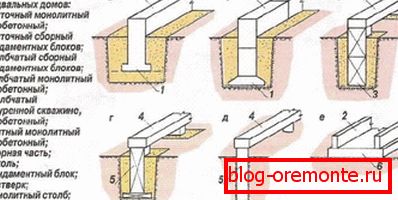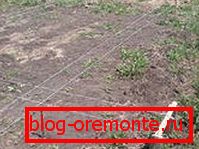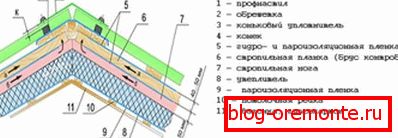How to build a house of timber: everything about this
For hundreds of years, our ancestors built houses of wood, during which time many new modern building materials appeared, but people invariably return to natural materials and the best of them is considered to be wood.
Wooden houses:
- warm
- reliable,
- beautiful
- durable.
But they have another important advantage, a wooden house is quite simple to build. Having 3 people who can use carpentry, metalworking tools, assistants, in one season you will be able to build a good wooden house, made of profiled or glued timber, and with your own hands.
Important: You can lay the foundation in advance, while it is warm, and build the house when the cold comes.

What is timber
The two most popular types of timber are shaped and glued. Profiled timber is a wooden product, square or rectangular cross-section.
The bar can be equal, geometrically correct form. Or profiled, having a certain profile, which allows to join the product more tightly in the places of conjugation.
Glued laminated timber, appeared relatively recently, it can be called a product of new, advanced technologies.
Visually, it looks like a profiled one. But the production technology is more complicated. Glued laminated timber consists of several layers of wood, fastened by a special technology. It is more durable, durable, easier to work with.
Important: Profiled timber can shrink up to 50 mm per 1m, depending on the dryness of the timber. Glued laminated timber sits, on average, 10-15 mm.
The thickness of the timber ranges from 90 mm to 275 mm.
The most running are profile sections:
- 100 mm to 150 mm.
- 100 mm to 200 mm.
- 150 mm to 200 mm.
- 180 mm to 200 mm.
With a maximum, standard length up to 12m.

We are preparing a project
Build a timber without a project you can not.
It is not a secret that there are many countries in the CIS, and the level of bureaucracy is almost the same. We provide a list of basic documents that you will need to prepare.
- Foundation drawing is required, a detailed description is provided with a full layout of the material, composition, depth, etc. As well as detailed data on the soil, composition, quality, groundwater, etc.
- The next number is the building plan. You prepare it, relying on the drawing of the foundation, but also with a detailed description.
- After you need a floor plan, a detailed plan. In it specify the partitions, stoves, fireplaces, windows, doors, etc.
- Another really important document is the deconstruction. Simply put, this is a detailed drawing of the walls of the house in section. By distribution, you can make an order for the manufacture of timber, you will make it and mark it as a designer. Then just look at the numbers and collect.
- Specification of every detail of the house.
- Detailed drawing of the roof, with a detailed description of all layers.
- The final look of the house.

Please note: take seriously the description of the timber itself, which wood, which profile, the level of timber dryness, etc. This will eliminate confusion when ordering.
The package of documents is solid, of course, you can rest against it, although the work is painstaking, but you can do it yourself. But - advice, do not waste time. Collecting papers may be longer than the construction itself. Trust the professionals, on our site you will be happy to help and it will cost you much less than amateur activities.
Foundation laying
To build houses from a bar, the capital, expensive base is not required. These buildings are of relatively low weight.
For the construction of log houses use one of the following types of foundations:
- Ribbon foundation shallow. This type of foundation is laid in a trench and has a maximum depth of 50 cm.
- The mixed or tape and column base. This type is similar to tape. But in all important nodes, it has a reinforcement in the form of concrete pillars.
- Columnar. This foundation is based on pillars connected by a concrete or metal grillage.
- On screw metal piles or stilt screws. The product of modern technology. Metal, resistant to corrosion of the pile, screwed into the ground and are connected by a grillage. The foundation is convenient, even the fact that it is easily repaired.
- On wooden piles, at this time it is rarely used as wood, as it is not processed, in the ground still deteriorates.
- On concrete piles. The foundation is excellent, but expensive. To drive a concrete pile, you need a special construction equipment.

In order to build a timber, enough of the first 4 options. The instructions below, with minor amendments, are suitable for the first 3 types of foundation.
Tape
- Any foundation begins with markup. For marking use ordinary wooden pegs and fishing line. At a distance of 30-40 cm from the designed wall, we drive in pegs and stretch the fishing line.
- The body of the foundation will be indicated not by hammers, but by a fishing line.

Important: after stretching the fishing line, you should measure the diagonal. The distance along the diagonals must be strictly the same. Even the slightest discrepancy speaks of irregular angles, and you will get an asymmetrical foundation.
- We take out the soil to a depth of 50 cm. Consider the thickness of the formwork. Control the bottom of the trench.
- Next, do 2 pillows up to 10 cm each. Sand plus rubble.
- We proceed to the installation of formwork.
- We invest waterproofing, the most budget option, it is roofing material or thick, technical polyethylene.
- Weld or knit reinforced metal frame.
- We fill with concrete, it is better to fill all at once, in a complex. Order a mixer, pour the foundation in one go and wait for it to freeze.
- Remove the formwork, and in its place, sprinkle a pillow of rubble.
Mixed foundation

It differs from the previous ribbon one by the presence of reinforcing pillars at the corners of the structure and in the most stressed nodes. Therefore, to the above, add instructions for pouring pillars with your own hands.
- We drill under each pole hole, to a depth of 1 m.
- Making a similar stripping of sand and rubble.
- We roll up the pipe from the ruberoid in 2-3 layers and fix with scotch tape.
- Insert the pipe into the hole, install the reinforcement cage, 200 mm high above the general basement level.
- Before the main fill, make the pillar sole. To do this, pour a solution into the pipe and raise the pipe, letting the solution spread. When the solution hardens a little, begin to fill the entire foundation.

Pillar foundation type
The pillars in this foundation can be made of concrete as in the previous version. So laid out of brick, in the form of thumbs.
Only lay out a curbstone with a well, and insert a reinforcing cage inside and fill it with concrete.
The foundation for the log house rises above the ground, the pedestals are set to the level and the grillage is mounted on them.
Rostverk can be concrete, then on the pillars formwork is made in the form of a bath, it is waterproofed, fittings are installed and concrete is poured. Or welded from metal, which is attached to the reinforcement frame posts.


Making wreaths

Crowns, this is the first row of timber. In order to build a good house out of timber, be attentive to the installation of crowns.
Instructions.
- Select a good, high-quality timber with a large cross-section.
- Treat the timber as best as possible with special solutions that protect against parasites, rot and fire.
- Before installing the foundation cover waterproofing.
- Exactly in accordance with the drawing, lay the beams and secure them with crutches or pins.
- Next, stack the second row, locking it with nails.
The video in this article clearly shows the installation of dowels.
Make the floor
At this stage it is necessary to lay the foundation of the floor, a rough version. The final finish will be made with interior trim.
If you are building a relatively small building, bath or garden house. It will be quite enough for you to lay an additional belt of timber along the perimeter, fasten it with a crown and mount logs on this belt.
But if the house occupies a large area, the approach will be somewhat different.
With a large square, to support the floor should lay out separate cabinets, something similar to a separate foundation for the floor.
- Depending on the composition of the soil, the columns are laid to a depth of half a meter.
- We make them square 40x40 or 50x50. Step tabs from 50 to 90 cm.
- Layers up to about 10 cm and tamp down sand and rubble.
- We make a small reinforcement cage, up to 10 cm high, install it and fill it with concrete.
- Next, we waterproof this base and lay out a brick bollard, to the level of the beams.
- Again bed waterproofing and assemble the beams.
- To beams self-tapping screws lags.
- Between the lag, with the help of a corner, we install waterproof plywood.
- We waterproof and glue all joints with duct tape.
- Top lay insulation and cover the sub floor.

We build walls
If you have done everything correctly before that, then build a wall with a bar with your own hands, it is easy for you.
- Profiled timber already has special grooves, they will facilitate the connection.
- Make the corner joint as you like, there are 3 types of corner joint:
- Abutting
- In the half-wood.
- Through root thorn.

- Between the bar must lay a heater.
- Each laid beam control level and fix the dowel.
- In the window area, leave technological gaps for shrinkage.
Important: when in the house you put the load-bearing wall or supporting columns under the roof, you should not fix them firmly to the roof first. Grab the screws and enough. When the house starts to sit down and walk you will have to adjust the height of the support. When you sit down, fix it permanently.
This video tells about the intricacies of wall construction.

Getting roof mounting
The roof is a rather important stage of construction, but you can mount it yourself.

- To begin with, knock a pattern out of the light boards. On it you will install rafters.
- Next, set the beginning and end of the design on the template.
- Between the installed rafters, at the control points, on the level, we stretch the strings from the fishing line.
- Focusing on the strings, controlling the level and pattern, we mount the remaining rafters.
- We fill the crate on top and fasten it under the stipler underneath the vapor barrier overlap.
- Under the vapor barrier, between the rafters we lay insulation, close it with another layer of vapor barrier.
- Next, we finally fix the bottom layer of the batten, it is already possible to attach the lining to your taste and wallet.
- On top of the budget option is to cover the upper crate of roofing material and on top of it sheets of slate.

The video presented in this article will help you understand the types of roofs.
How do you see a project needed and important!
Conclusion
As you can see, there is nothing particularly difficult in building a house from a profiled or glued timber. Moreover, such houses are much safer than concrete boxes, and their price will be much lower.
And then, if you are constrained in money, it is better to build a beautiful, warm, reliable house out of a bar for the season and already move in, rather than dreaming or collecting for a long time on a stone one.
Easy construction!